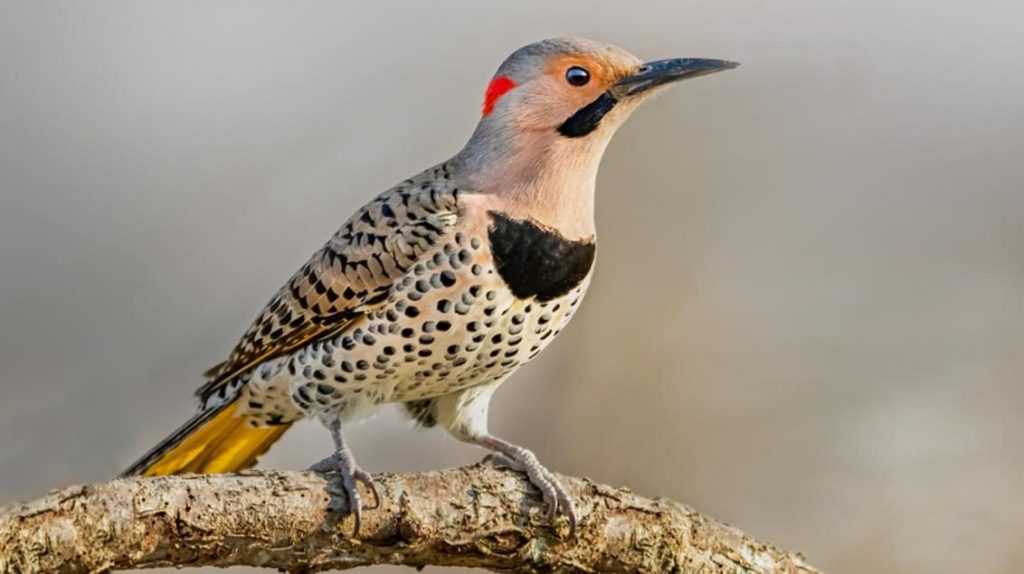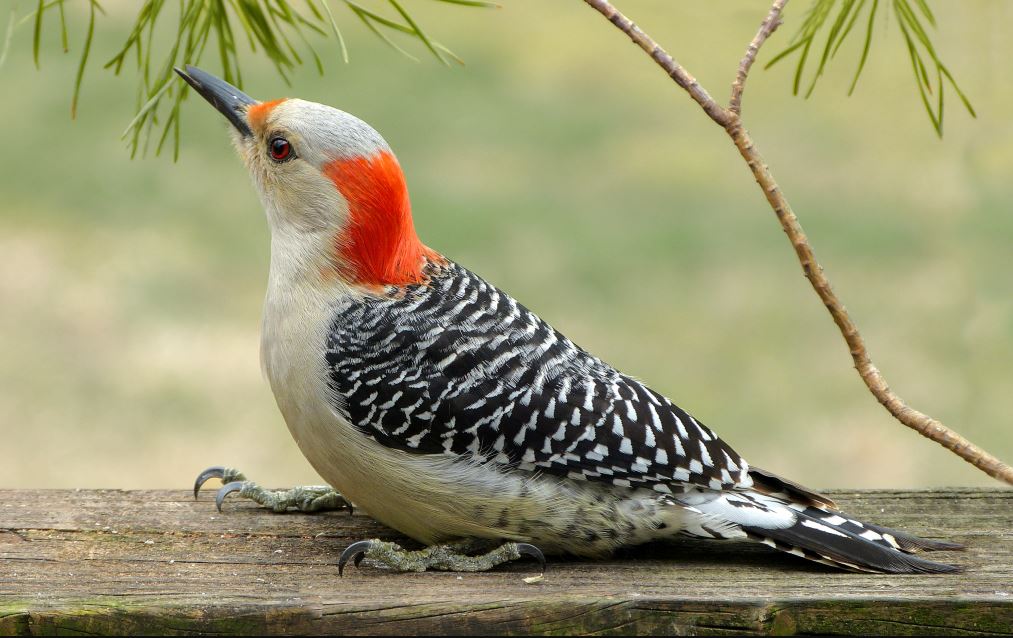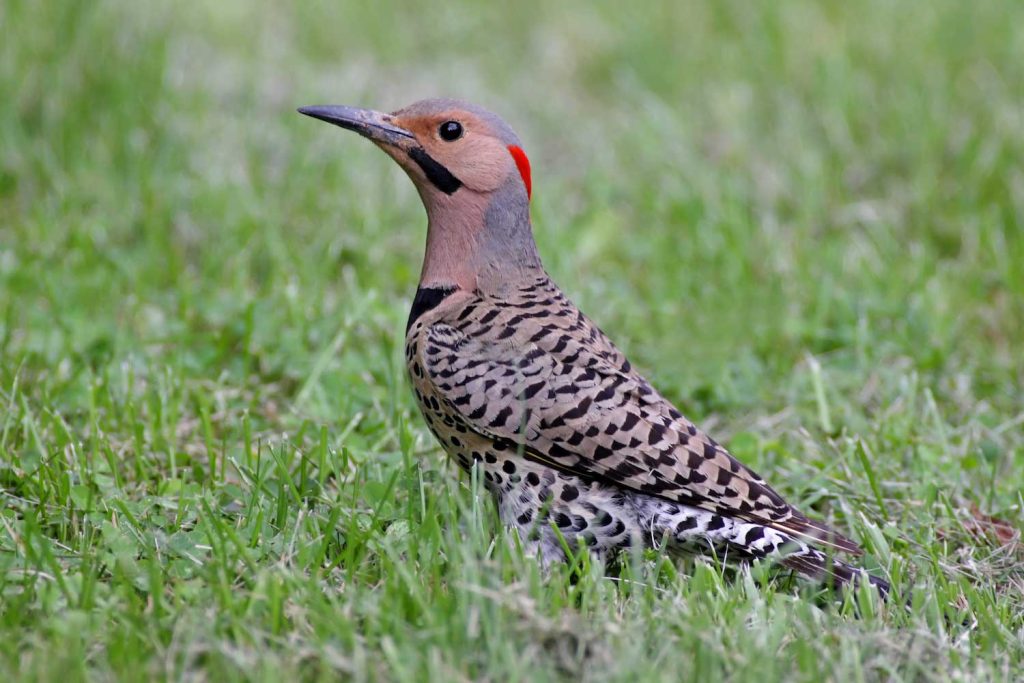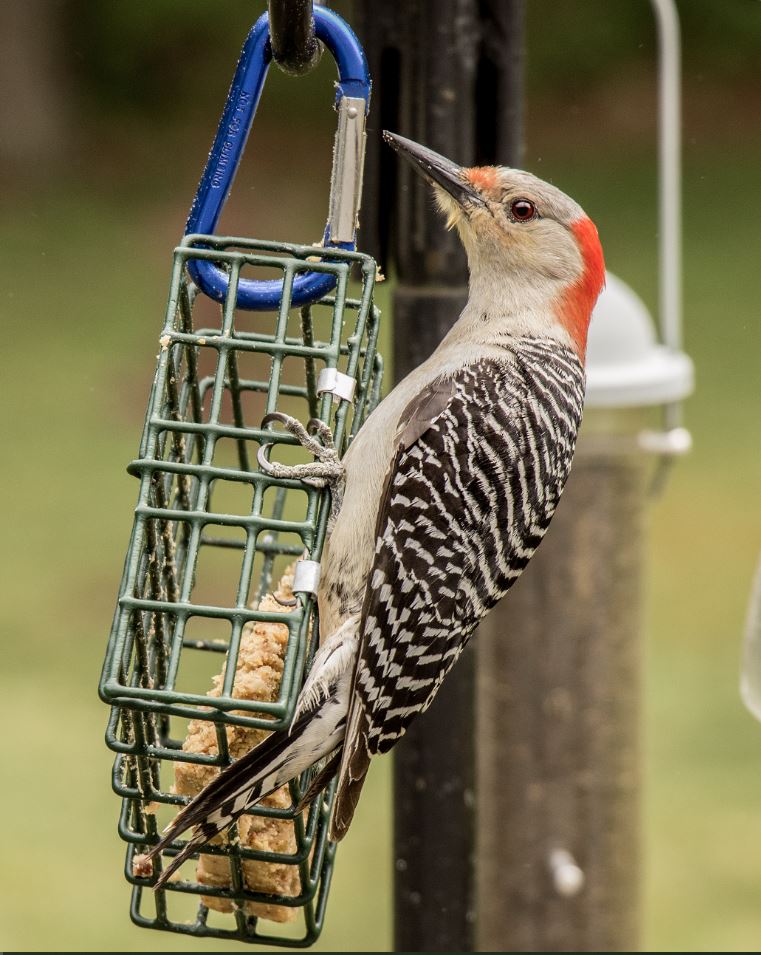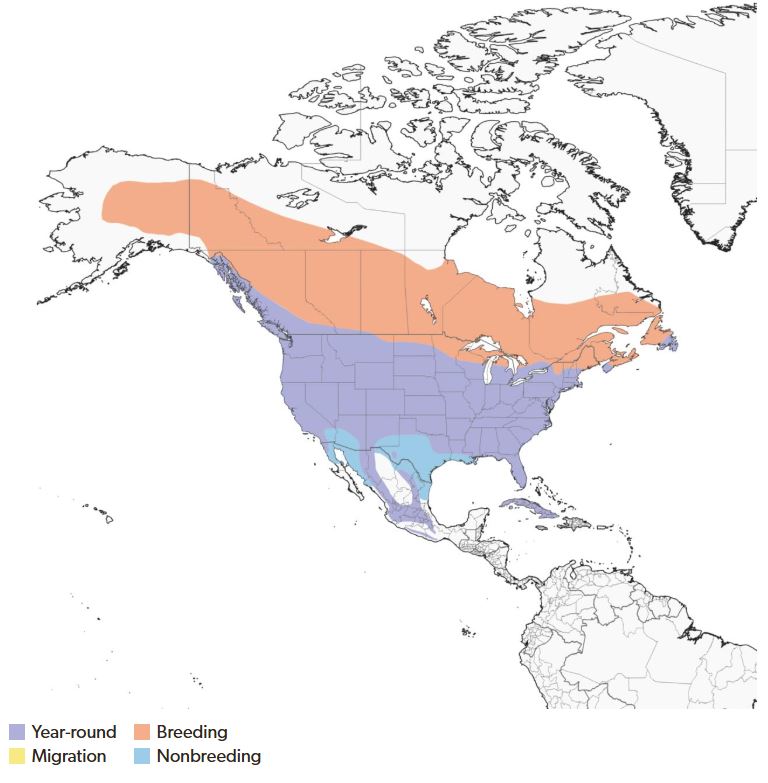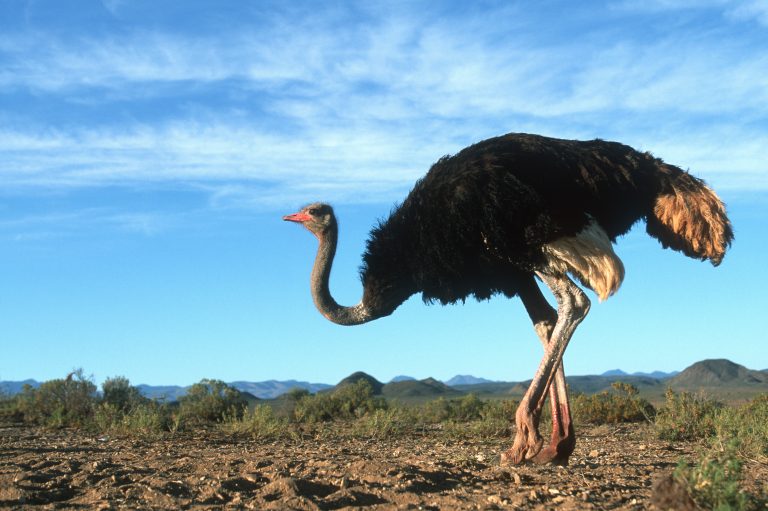Northern Flicker vs Red-bellied Woodpecker: How to Tell Them Apart
If you’ve ever spotted a flashy, speckled woodpecker in your backyard and wondered whether it was a Northern Flicker or a Red-bellied Woodpecker, you’re not alone. These two birds are among the most common and easily confused woodpeckers in North America. While both are striking and fascinating, they have distinct differences that birdwatchers and backyard enthusiasts can learn to recognize. In this guide, we’ll cover everything you need to confidently tell them apart—including physical features, sounds, behaviors, habitats, and seasonal patterns.
Quick Comparison Chart
| Feature | Northern Flicker | Red-bellied Woodpecker |
| Length | 11–12.2 in (28–31 cm) | 9.4–10.5 in (23–26 cm) |
| Wingspan | 17.7–20 in (45–51 cm) | 15–17 in (38–43 cm) |
| Weight | 3.5–5 oz (100–140 g) | 2.5–3.2 oz (75–91 g) |
| Head Markings | Brown crown, black mustache (males) | Bright red crown and nape (males), partial in females |
| Back & Wings | Brown with black bars, spotted belly | Bold black-and-white ladder pattern |
| Underwings | Yellow (East) or red (West) shafts | Pale white with dark tips |
| Habitat Preference | Open woods, lawns, ground foraging | Woodlands, suburban backyards |
| Primary Diet | Ants, beetles, ground insects | Insects, seeds, nuts, suet |
| Calls & Drumming | Loud “kleer” call, rolling rattle | Churr call, shorter drumming |
1. Appearance: Size, Shape, and Plumage
Northern Flicker (Colaptes auratus)
Northern Flickers are among the few woodpeckers that you’ll often see foraging on the ground. They’re large, sleek, and have a brownish overall color tone with heavy black spotting on the belly. One of their most notable ID features is their underwing color—bright yellow in the Eastern U.S. (Yellow-shafted Flicker) or red in the West (Red-shafted Flicker). They also sport a black bib on their upper chest and a noticeable white rump visible in flight.
Males have a black mustache mark extending from their beak, while females lack this.
Red-bellied Woodpecker (Melanerpes carolinus)
Despite their name, the red belly on this bird is usually faint and hard to see. The real showstopper is the bold red on the head: males have red from the beak to the nape, while females have red only on the back of the head. Their backs feature a strong black-and-white barred (“ladder”) pattern that stands out when perched on trees.
Their size is smaller than the Northern Flicker, and they have a chunkier, more compact build.
2. Behavior and Feeding Habits
Northern Flicker
Northern Flickers break the woodpecker mold in several ways. Rather than pecking tree bark for insects like many of their relatives, flickers prefer to forage on the ground. They use their slightly curved bills to dig into the soil or sift through leaf litter in search of ants—their favorite food. In fact, ants make up a majority of their diet, particularly during the warmer months.
You’ll often find flickers poking around anthills, flicking aside leaves, or even hammering into the ground to reach underground insect colonies. When insects are scarce—especially in the winter—they switch to a more plant-based diet, feeding on berries, nuts, and seeds.
Their relatively quiet and gentle behavior on the ground is a good indicator of their species. They are less likely than other woodpeckers to visit bird feeders, but they may show up if suet or mealworms are offered.
Red-bellied Woodpecker
Red-bellied Woodpeckers behave much more like the woodpeckers people are familiar with. They cling vertically to tree trunks and larger branches, using their stiff tail feathers for support and pecking into bark to uncover insects. They are agile climbers and move in jerky, hopping motions as they search for food along the bark’s surface.
These woodpeckers are frequent visitors to backyard bird feeders, especially those that offer high-fat options like suet, peanut butter, peanuts, and black oil sunflower seeds. Red-bellieds are also known for caching food—storing seeds and nuts in crevices for later use, especially in colder months.
They are more likely to aggressively defend feeding territories, especially around suet stations, and are known to chase off smaller birds.
This contrast in feeding behavior—ground foraging vs. tree foraging—can be one of the easiest ways to distinguish between the two species in the wild.
3. Vocalizations and Drumming
Northern Flicker
Their call is a loud, sharp “kleer!” and a rolling “wik-wik-wik” or laugh-like rattle. They drum less frequently than other woodpeckers, and often use resonant objects like metal poles or hollow limbs.
Red-bellied Woodpecker
They produce a “churr” or “querr” call and are frequent drummers, especially in spring. Their drumming is short and steady, often used to establish territory or attract mates.
4. Habitat and Range
Northern Flicker
Northern Flickers thrive in a variety of semi-open habitats. They are most commonly found in open woodlands, forest edges, groves, and even suburban yards and parks. They prefer areas with some trees for nesting but plenty of open ground for foraging. You’ll often spot them in grassy fields, along trails, and even in city green spaces. This adaptability has helped them remain widespread across the continent.
Geographically, they are found throughout North America. In the eastern and northern parts of the U.S. and Canada, you’ll typically see the Yellow-shafted Flicker, while in the western U.S., the Red-shafted variety is more common. Some hybrid zones exist in the central U.S., especially around the Great Plains, where the two types interbreed.
Red-bellied Woodpecker
ed-bellied Woodpeckers are strongly associated with deciduous forests but have readily adapted to human-modified environments like city parks, wooded suburbs, and backyard habitats. They prefer mature forests with large trees for nesting and feeding but are also common in fragmented woodlots and urban areas with bird-friendly landscaping.
In terms of range, they are primarily found in the Eastern and Southeastern United States, extending from the Gulf Coast northward into the Great Lakes region and parts of the Northeast. Unlike the flicker, they are not found in the western U.S. Their populations have been gradually expanding northward in recent decades, likely due to warming climates and increased availability of backyard feeders.
5. Seasonal Activity
Understanding how Northern Flickers and Red-bellied Woodpeckers behave throughout the year can offer valuable insight for birdwatchers and backyard enthusiasts. While both species are largely non-migratory, their behavior shifts noticeably with the seasons—especially during breeding and feeding cycles.
Spring: Courtship, Drumming, and Nesting
As daylight increases and temperatures rise, both Northern Flickers and Red-bellied Woodpeckers become more vocal and active.
- Northern Flickers begin their mating rituals, which include courtship flights and mutual tapping—where a pair will rhythmically tap a branch or tree trunk together. You’ll hear their loud “kleer!” calls echoing through open woodlands and parks as they establish territories and attract mates. Males often drum on resonant surfaces, including metal poles and gutters, to advertise their presence.
- Red-bellied Woodpeckers become fiercely territorial in spring. Males engage in persistent drumming on dead trees or even house siding to ward off rivals and claim nesting sites. They call frequently with their signature “churr” sound and begin excavating nesting cavities, often in older trees or utility poles.
This is one of the best times to observe both species, as they’re bold, visible, and less shy during mating season.
Summer: Rearing Young and Feeder Visits
By early summer, nesting is in full swing and parents are busy feeding their hatchlings.
- Northern Flickers typically lay 5–8 eggs, with both parents sharing incubation duties. After hatching, the chicks remain in the cavity nest for several weeks before fledging. Once they fledge, young flickers may follow their parents around open areas, learning how to forage for ants and beetles on the ground.
- Red-bellied Woodpeckers also raise their young in tree cavities. After fledging, juvenile red-bellieds often accompany their parents to feeders. At this stage, they can be identified by their duller plumage and shorter red markings compared to adults. Feeders with suet and peanuts are a favorite stop during this time.
Both species are highly active and visible in early mornings and evenings, especially when feeding young.
Fall: Fat Buildup and Foraging Behavior
As summer winds down, both birds shift their behavior to prepare for colder months.
- Northern Flickers begin expanding their diet to include more fruits and seeds. You’ll often see them visiting sumac, dogwood, and other berry-producing shrubs. Though not common feeder birds, they may start appearing more often at suet feeders as natural insect populations dwindle.
- Red-bellied Woodpeckers intensify their foraging efforts. They not only consume more food to build fat reserves but also begin caching food for winter. You might observe them wedging seeds and nuts into bark crevices or fence posts. Their feeder visits become more regular and purposeful.
Both species become more adaptable and opportunistic during this season, taking advantage of backyard offerings and natural food sources.
Winter: Survival and Feeder Reliance
Winter presents challenges for both species, particularly in colder regions where food becomes scarce.
- Northern Flickers, although less frequent at feeders than other woodpeckers, are more likely to show up during winter. Suet blocks, mealworms, and nut blends can entice them, especially in areas with deep snow where ground foraging becomes difficult. They tend to be more solitary and often move short distances south or to lower elevations to avoid extreme cold.
- Red-bellied Woodpeckers remain active and visible throughout the winter months. Thanks to their adaptability and food-caching habits, they thrive even in snowy conditions. They make regular visits to feeders offering suet, sunflower seeds, and peanuts, and are known to defend feeder territories aggressively.
Cold weather makes both species more predictable in their routines, giving birdwatchers consistent opportunities for sightings.
6. How to Attract Each to Your Yard
Bringing these beautiful woodpeckers into your backyard is easier than you might think—especially if you cater to their natural preferences. While both species will appreciate suet and shelter, they each have their own unique tastes and habits when it comes to food, habitat, and nesting.
For Northern Flickers:
Northern Flickers are ground-feeding woodpeckers that prefer a more naturalistic yard with open space and leaf litter. Here’s how to invite them in:
- Use Ground-Level Feeding Trays: Unlike most woodpeckers, flickers love to forage on the ground. Set out low or flat feeders with live or dried mealworms, ant pupae, or chopped fruits like apples, raisins, or grapes. A shallow tray filled with natural treats will often do the trick.
- Offer Insect-Rich Suet and Logs: Flickers eat ants and beetles more than any other food. Provide suet blocks that include insects, or even better, install insect-embedded logs or drill shallow holes into a log and stuff them with suet and dried insects.
- Maintain a Natural Yard: Let nature do its thing. Leave leaf litter, logs, and brush piles untouched to attract ants and beetles that flickers feed on. Avoid using pesticides and herbicides, as these reduce the very insect population flickers depend on.
- Provide a Shallow Water Source: A low birdbath or shallow water dish can be a magnet for flickers, especially during dry spells. Keep it clean and place it near ground cover or open lawn areas.
For Red-bellied Woodpeckers:.
These energetic climbers are more traditional woodpeckers and are easier to attract to feeders and tree-rich yards.
- Hang Suet Feeders Year-Round: Red-bellied Woodpeckers are suet lovers. Offer high-fat suet cakes, especially ones with peanut bits, berries, or mealworms. Use caged or upside-down feeders to keep starlings away.
- Provide Nuts, Seeds, and Fruit: Add black oil sunflower seeds, shelled or whole peanuts, and fruit like chopped apples, oranges, and bananas to your feeder setup. Platform feeders or large hopper feeders work best for these larger birds.
- Keep Dead Trees (Snags): If it’s safe to do so, leave standing dead trees or snags on your property. Red-bellieds will use them for natural foraging and nesting. These trees host insects under the bark and offer cavities for shelter.
- Add a Mix of Tree Heights: These birds are agile climbers and prefer areas with mature trees and tall branches. A mix of tree sizes adds vertical variety and gives them ideal foraging space.
Nesting Boxes: A Shared Invitation
Both Northern Flickers and Red-bellied Woodpeckers will use nesting boxes, especially when natural cavities are scarce. Here’s how to set them up properly:
- Height: Mount the box 8 to 20 feet off the ground in a quiet, sheltered location.
- Material: Use untreated wood only—avoid pressure-treated lumber, which can release harmful chemicals.
- Design Tips:
- Skip the perch—woodpeckers don’t need it, and it just attracts unwanted guests.
- Fill the bottom of the box with 2–3 inches of wood chips or sawdust to mimic the soft floor of a natural cavity.
- Place the entrance hole facing away from prevailing winds and direct sunlight.
- Timing: Install boxes by late winter or early spring to increase your chances of occupancy during breeding season.
With a combination of natural habitat, the right foods, and well-placed nesting options, your yard can become a welcoming haven for both the ground-dwelling flicker and the tree-loving red-bellied woodpecker. Once they find a good spot, they may return year after year.
7. Final Tips to Remember
| Tip # | Quick Clue |
| 1 | Flickers have spots and yellow underwings. |
| 2 | Red-bellieds have zebra backs and red caps. |
| 3 | Flickers forage on the ground. |
| 4 | Red-bellieds stick to trees and feeders. |
| 5 | Call it out: Flicker’s “kleer” vs RBW’s “churr.” |
With a little observation and practice, you’ll quickly be able to tell these two apart. Consider keeping a birding journal or using apps like Merlin Bird ID to track your sightings and calls.
FAQ
Q: Are Northern Flickers and Red-bellied Woodpeckers related?
A: Yes, both belong to the woodpecker family (Picidae), but they are different species with different habits and appearances.
Q: Can they live in the same area?
A: Absolutely. In states like Ohio, they commonly share habitats and may even visit the same feeders.
Q: Which is more likely to use a nesting box?
A: Red-bellied Woodpeckers are more consistent cavity nesters and may be more likely to use a nesting box, especially if it’s placed properly.
Q: Do they migrate?
A: Northern Flickers may migrate slightly in winter, but both species are typically year-round residents in much of their range.
Conclusion
While they may both be woodpeckers with eye-catching plumage and loud voices, the Northern Flicker and Red-bellied Woodpecker each bring unique charm and habits to your backyard. With this guide, you’ll be ready to identify them confidently and deepen your appreciation for North America’s diverse birdlife.
Keep your feeders filled, your ears tuned in, and your binoculars ready—your next sighting could be right outside your window!


